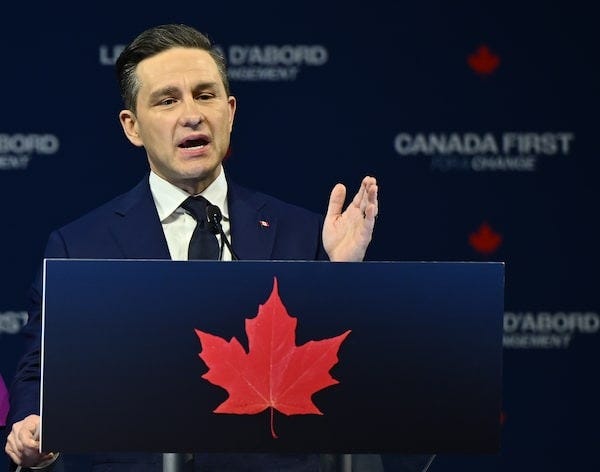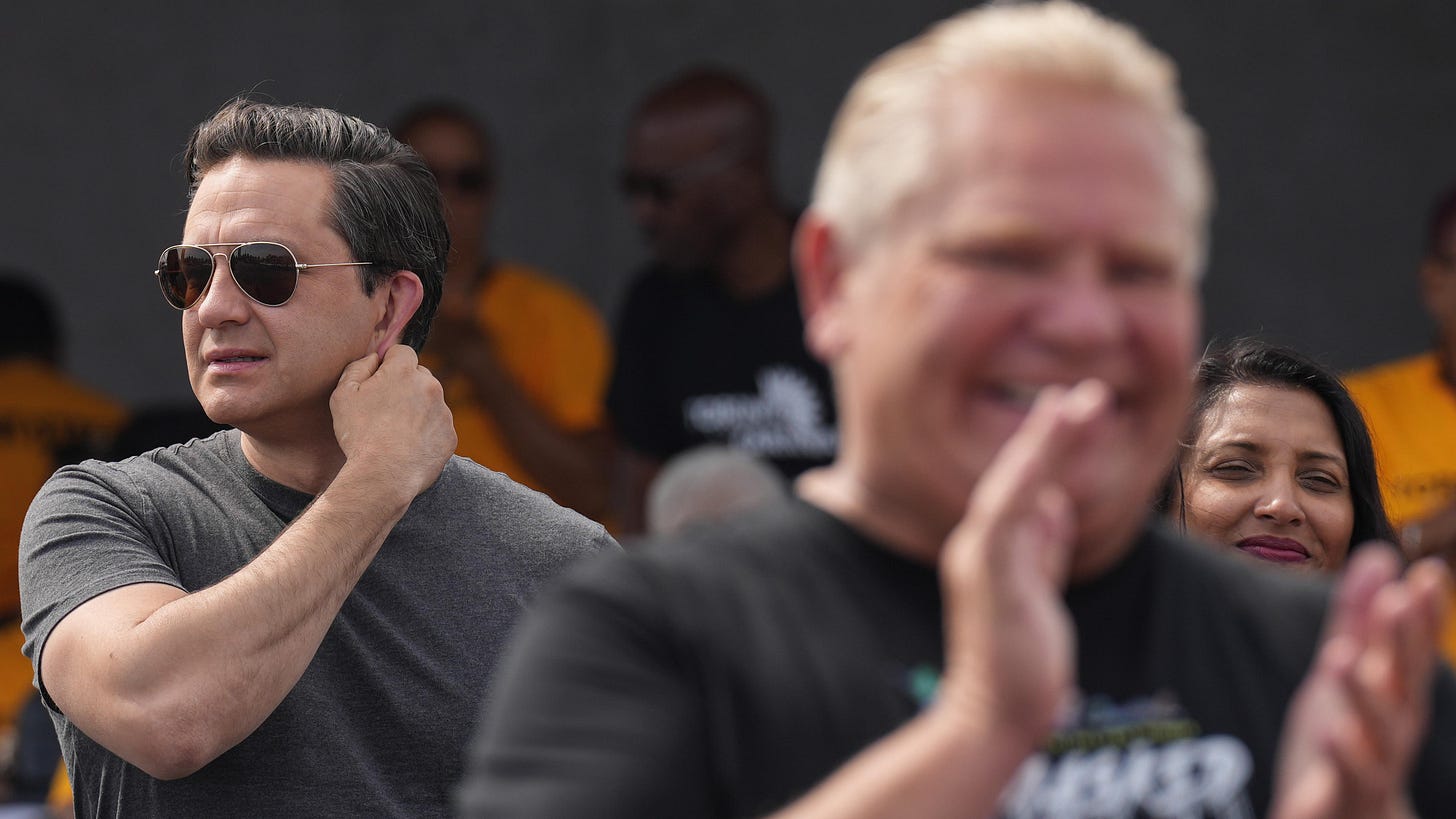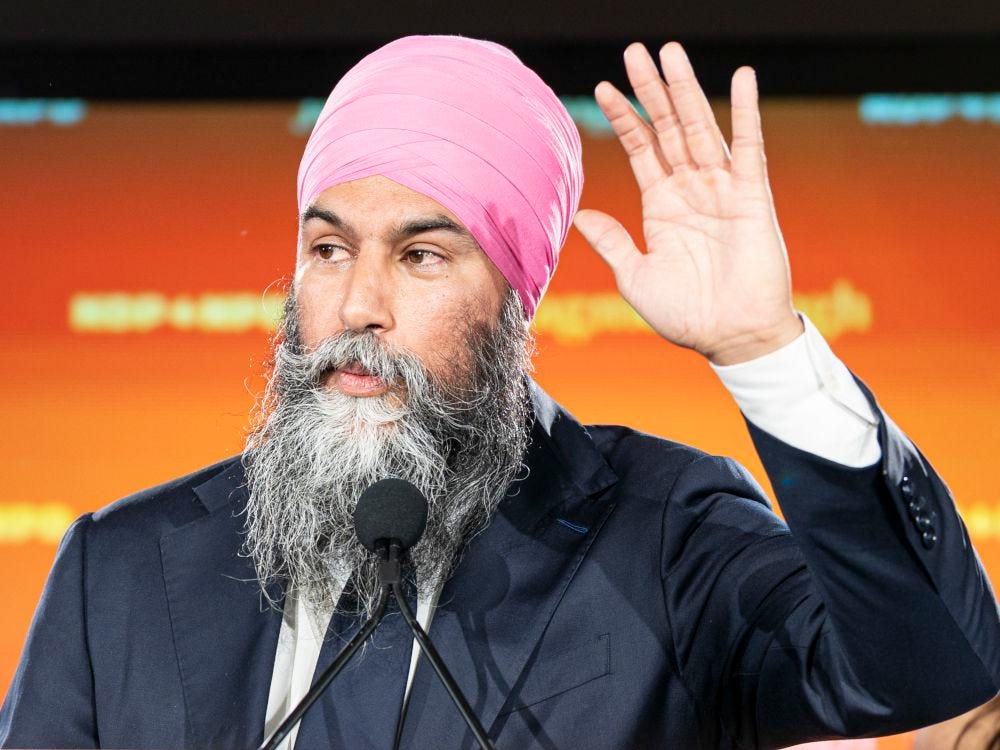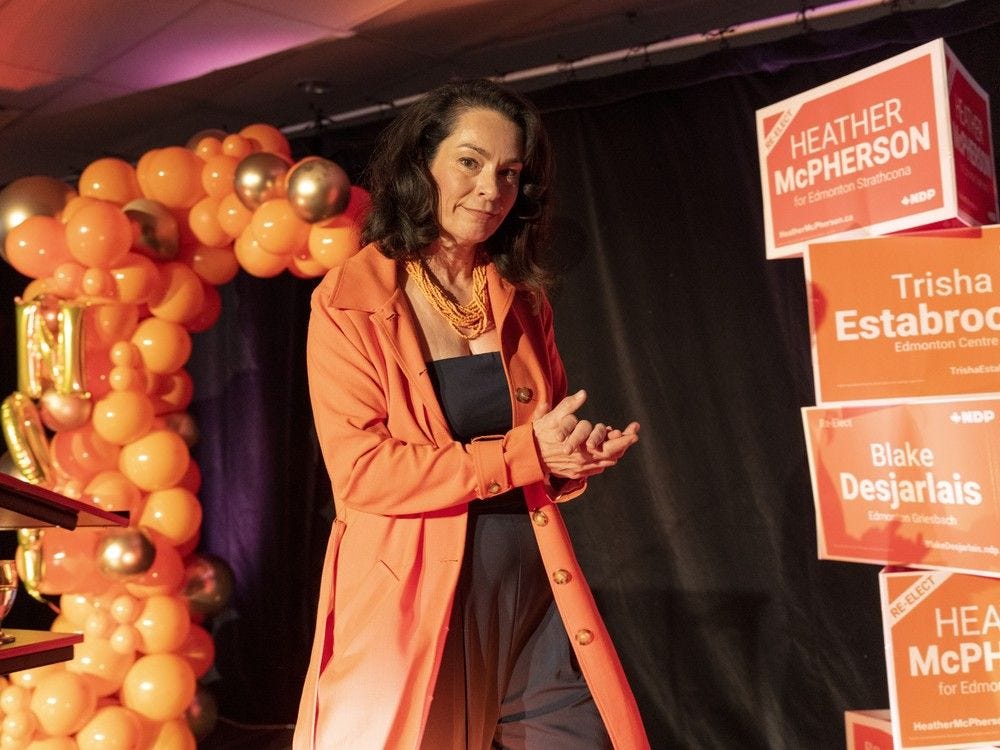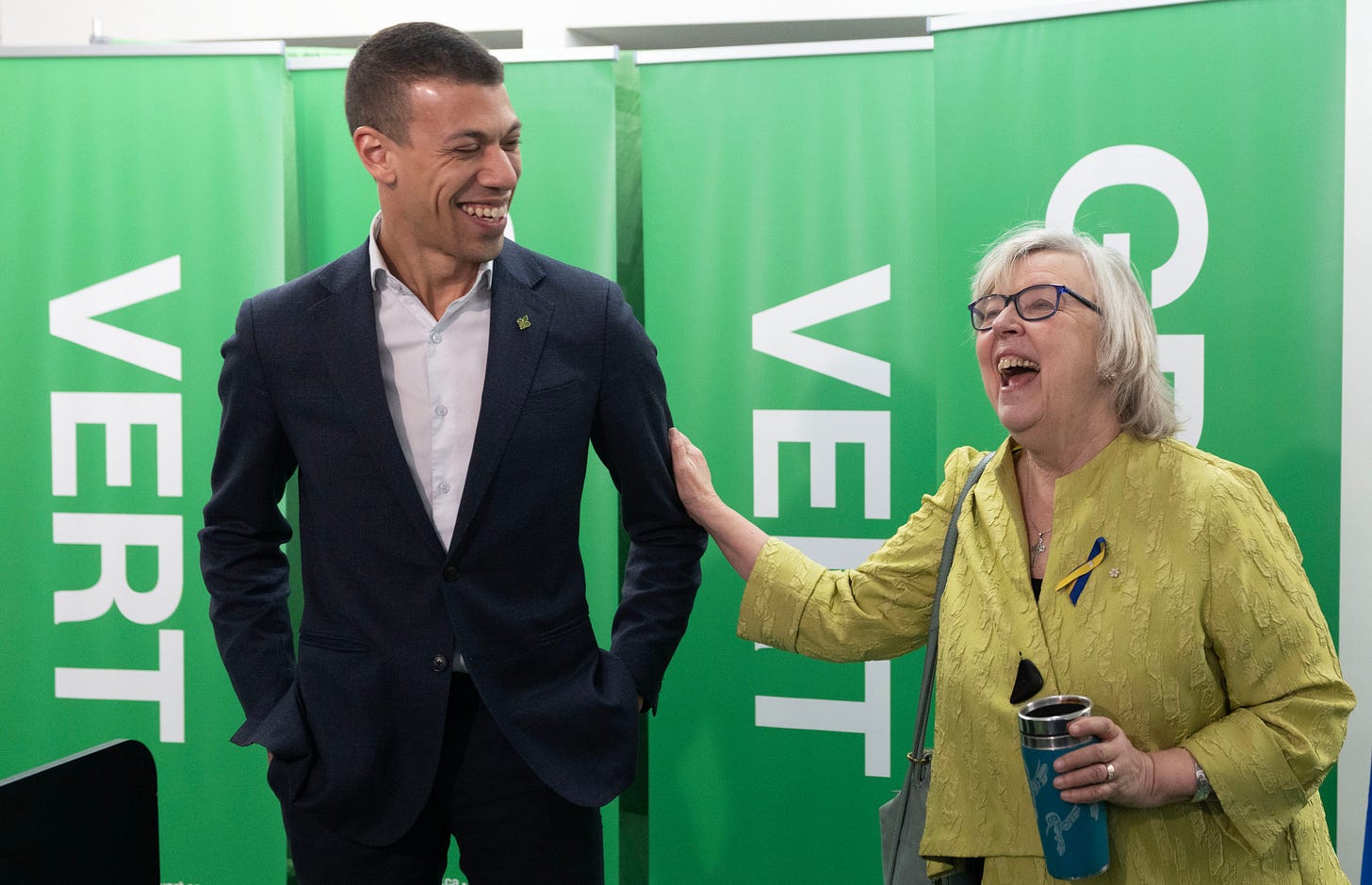What Next?
Primary colours are all the rage right now.
Mark Carney and the Liberals just produced a comeback for the ages. When Justin Trudeau announced his intention to resign as Prime Minister, the Conservatives held a 27 point lead over the Liberals in federal polling, both from a party perspective as well as a leadership perspective. Pierre Poilievre had a layup in front of him, and if he made it, he’d coast to the office of the Prime Minister, and potentially a Conservative majority.
Then three things happened: Carney became the new leader of the Liberals, Donald Trump opened his mouth, and Poilievre kept his mouth closed. Now, the Liberals have a near majority in Parliament, and Poilievre doesn’t even have a seat to watch from. What went wrong, and what’s next for each of the major parties?
Why So Blue?
It’s not that difficult to understand what happened to the Conservatives. In my previous post about the Ontario provincial election, I noted that where the Liberals and NDP split votes by virtue of both being left-wing parties, the Conservatives collect nearly all right-wing votes because they’re the sole (serious) right-wing representation at the federal level. However, for a certain contingent of Canadians, they’re not right-wing enough. With such a large party, you’re bound to have differing views within it, some opposed to others.
Throughout the course of the campaign, Ontario premier Doug Ford and his former campaign advisor Kory Teneycke constantly criticised the federal Conservatives for ‘campaign malpractice’, attributing it as the reason why the Conservatives lost that massive 27 point lead they once held. This earned them a response from elected Conservative MP Jamil Javani the night of the federal election, calling Ford a “hype-man for the Liberals”.
Obviously, everything is fine, no in-fighting to see here.
The recently formed People’s Party of Canada (PPC), which leans further right than the Conservatives, received just over 141,000 votes this election, approximately 0.7% of the total vote share. Why is that relevant? It connects to Poilievre’s concession speech on the night of the election quite well. Throughout the course of the election, it seemed like Poilievre was avoiding tackling the Trump situation head on, and avoiding calling it for what it was, a ridiculous ploy and a direct threat to Canadian sovereignty. Instead dancing around the issue, only speaking about it in vaporous terms. During his concession speech, he said the following:
“And as I said, while we will do our constitutional duty of holding the government to account and proposing better alternatives, we will always put Canada first as we stare down tariffs and other irresponsible threats from President Trump. Conservatives will work with the prime minister and all parties with the common goal of defending Canada’s interests and getting a new trade deal that puts these tariffs behind us while protecting our sovereignty and the Canadian people.”
Let me connect the dots. Poilievre purposefully avoided directly refuting Trump or speaking about him harshly throughout the entirety of the campaign, the reason being he didn’t want to upset that mini-contingent of Canadians known as “MAGA North”, the ones more inclined to vote with the PPC, in short, Trump fanboys. This didn’t sit well with the more moderate (read: normal) members of the Conservative party, ones that recognized that Trump’s threats should have been dealt with in the strictest of terms. It also very much did not sit well with Canadians who may have been undecided as a whole, much preferring the strong refutations from Carney and Jagmeet Singh instead. In fact, it was from that point on that Conservative support really started to plummet, because not even a month after Trump first started running his mouth about Canada being the 51st state, the Liberals took their first lead in the polls, and never looked back.
Recall that the PPC ended up getting 141,000 votes during the election, and though it could be that some voters who were initially going to vote PPC did end up voting Conservative, it was a massive miscalculation on the part of Poilievre and the Conservatives to cater to this fringe group, alienating hundreds of thousands of other Canadians in the process.
What they should do next: It’s become evident throughout the course of this election process that Canadians don’t subscribe as heavily to the Trumpian rhetoric as Americans, and even former Conservative Albertan premier Jason Kenney was on the election night CBC panel, adamant that the Conservatives should rid themselves of any connection to Trump and the PPC fringe right side of the spectrum. I’m inclined to agree, and think the Conservatives should focus on what they do well - play strong opposition to Carney and his government, hold them accountable, while also catering more towards the centrist, on-the-fence side of Canada. While Poilievre hasn’t resigned as leader (yet), it’s tough to see him continue in his position without even having a seat in Parliament*. It might behoove the Conservatives to find a leader that both has a seat, and a personality that falls between the white bread, boring nature of Andrew Scheer, and the slimy career politician smirk of Poilievre. One of Carney’s assets is his calm, confident demeanor, the behaviour of someone acting like the adult in the room. If the Conservatives can find a leader of the same character, they can retain some of the prestige among the party that existed during the Harper era. Considering they scored the highest number of seats for an opposition party ever, it’s not all doom and gloom, they just need to make a few tweaks, and they may find themselves back in power pretty soon.
And for God’s sake, please get rid of the childish, grating, cringey three-word slogans. “Bring it home”, “Axe the tax”, while effective from a marketing perspective, they are pure torture to hear repeated ad nauseum whenever any Conservative voter opens their mouth.
*As of the writing of this post, Alberta MP Damien Kurek announced he would step aside and allow Poilievre to run in a by-election for his seat.
Nothing Rhymes with Orange
The NDP had arguably an even more disastrous election, going from their 2021 seat total of 25 to a paltry 7 seats this time around. Of course, a lot of that is due to a heavy vote swing in favour of the Liberals due to Canadians’ fear of the Conservatives, but the NDP also lost in some ridings it had an absolute stronghold in. That’s also just one of the reasons attributed to their performance, with others including the poor leadership of Jagmeet Singh, the burning of bridges with the Liberals that helped them achieve a few objectives while in Parliament, and just an overall poor strategy when it came to the election.
All these reasons have merit, and it’s unfortunate to see that this election turned into a glorified two-horse race, especially since Canada is a country that has a viable third party, but it’s evident that people didn’t see the NDP as being viable enough to vote for this time. In fact, their numbers were absolutely abysmal, coming in a distant fourth place in some races, and losing almost all their presence in British Columbia, down to only 3 seats from 13 last election. With Singh stepping down as party leader on the night of the election having lost his own seat, they now have to choose from one of their 7 remaining MPs to lead the party.
Of course, I don’t want to paint the NDP as innocent victims who lost due to circumstances only outside their control, and the big, bad Liberals. The NDP, commonly known as one of the more left-leaning parties, certainly didn’t endear themselves to left-leaning voters when they ousted Sarah Jama from the provincial party, and voted to censure her in legislature as well. Mind you, this being done to a young, black, Muslim, disabled, pro-Palestinian woman, a character profile that is heavily inclined to vote NDP, but the party showed that they weren’t ready to take on the realities of leftist candor.
What they should do next: Before spending on marketing, before even electing a new leader, I think the NDP should have one priority and one priority only. Enter the million-dollar question: how are they different from the Liberals? People who are more in-tune politically may be able to point out the nuances and differences, but to the average person, the NDP is just Liberal, but… more. It becomes especially hard when during debates, the NDP leader is tasked with presenting similar ideas to the Liberals, but also having to disagree with them, and position themselves as better suited to lead. They need to have a party-wide branding meeting, and figure out how to position themselves as distinctly as they can away from the Liberals. It honestly isn’t even that difficult to do, considering the Liberals are more centrist in nature, and pretty focused on moderate economic and social policy. The NDP needs to focus on its socialist roots, supporting unions, marginalized communities, and positioning itself as the “common people’s party” much like the PPC has tried (and failed) to do on the right.
Another idea I’ve seen being floated online is that the NDP should focus less on gaining federal leadership, and focus more on running solid grassroots local candidates, since many of the ridings they still maintain have been won by longtime MPs, people who the local voters have trust in, regardless of what the federal picture looks like. Instead of being the federal third wheel, focus on being “community first”, and help out the riding to such an extent that they become absolutely undeniable as a viable option to vote for, and this will blossom into federal support.
Green With Envy
The Greens are in the same boat as the NDP on a much smaller scale. Winning only one seat this time around, that being Elizabeth May’s longtime riding of Saanich-Gulf Islands, their presence remains all but absent in Parliament. Their main issue is twofold, the first part being that their policies outside of sustainability are not well-marketed to the average voter, and the second part being that very few people, if any, see the Greens as a viable party to be even the opposition, let alone lead the country.
It seems like the Greens keep trying to inject fresh blood into the party, with both Anamie Paul and Jonathan Pedneault being brought on as party leaders, but the strategy doesn’t seem to be bringing them much success, with May still being the strongest MP present in the party, and at present, the only one with a seat. It speaks to a larger issue that though Canada is seemingly becoming more socially progressive as time passes, there is still an idea engrained in people’s minds of what a leader should be, and what a leader should look like.
What they should do next: All of this being said, I think the Greens have potential, along with the NDP, to really take advantage of a younger audience that may be misinterpreting the cause of their issues, and focus on using their passion (or lack thereof) to spark their ascent. Again, a lot of it comes down to branding, and the Greens need to balance their focus on sustainability with other issues that are of concern to the population at large. How many people do you know at this very moment that could tell you what the Greens stance on government spending is? Or what their strategy is to combat housing crises? Sure, it may very well be that they don’t need to flesh out their strategies on these major issues since they know they aren’t going to have federal power any time soon, but you dress for the job you want, not the job you have. If the Greens want to be seen as viable, they need to start acting like they are. Considering the Bloc Quebecois, a younger party than the Greens, that only runs candidates in one province, still gains a decent chunk of seats every election, who’s to say the Greens can’t shore up and increase their reach to the point where they’re winning double digit seats?



